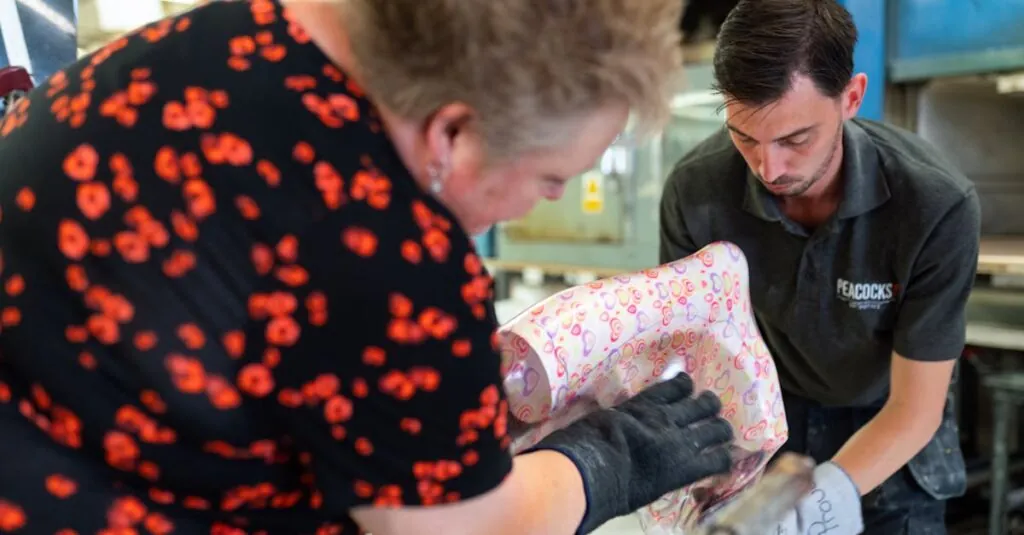Table of Contents
ToggleIn a world where everything seems to be going digital, 3D printed medical devices are the new superheroes of healthcare. Imagine a future where your prosthetic limb is custom-made just for you, or where surgical tools are whipped up faster than a barista can make your morning coffee. Sounds like science fiction? Think again!
Overview of 3D Printed Medical Devices
3D printed medical devices represent an innovative approach reshaping healthcare. Their ability to create personalized solutions enhances patient care significantly.
Definition and Technology
3D printing, or additive manufacturing, involves layering materials to form objects. This technology allows for the creation of complex shapes that traditional methods struggle to produce. Biocompatible materials, such as polymers and metals, often serve as the foundation for medical devices. Manufacturers utilize computer-aided design software to customize devices according to specific patient needs. This flexibility results in unique items such as implants and prosthetics tailored individually.
Applications in Healthcare
Numerous applications exist for 3D printed medical devices within the healthcare sector. Customized prosthetics offer improved comfort and functionality, meeting the specific needs of patients. Surgical guides produced through 3D printing enhance the precision of complex procedures. From dental implants to orthopedic devices, these advancements streamline production processes, reducing costs and lead times. Additionally, bioprinting showcases the potential for creating tissues and organs, paving the way for groundbreaking innovations in transplants.
Advantages of 3D Printed Medical Devices
3D printed medical devices offer numerous benefits that enhance patient care and improve healthcare outcomes. Their unique capabilities transform traditional approaches, providing innovative solutions in various medical fields.
Customization and Personalization
Customization stands at the forefront of 3D printed medical devices. Tailoring prosthetics and implants to the specific anatomy of each patient enhances comfort and functionality. Custom designs accommodate individual needs, improving patient satisfaction. Each device reflects precise measurements, ensuring a perfect fit. Personalized solutions can minimize complications associated with ill-fitting devices. Healthcare providers can easily modify designs to adapt to evolving patient requirements. This adaptability streamlines processes and supports better clinical outcomes.
Cost-Effectiveness and Efficiency
Cost-effectiveness represents a significant advantage of 3D printed medical devices. Manufacturing personalized devices often incurs lower production costs compared to traditional methods. Rapid prototyping reduces lead times, allowing for quicker deliveries to healthcare facilities. Less material waste during production further contributes to financial savings. Clinics can allocate resources more effectively, leading to improved patient access to necessary devices. Efficiency in production translates to faster turnaround for urgent cases, enhancing overall patient care. By leveraging additive manufacturing, healthcare systems can achieve more sustainable practices without sacrificing quality.
Challenges in 3D Printed Medical Devices
Several challenges exist in the field of 3D printed medical devices that affect their widespread adoption and integration into healthcare.
Regulatory Hurdles
Regulatory hurdles pose significant challenges for the approval of 3D printed medical devices. Agencies like the FDA require thorough testing to ensure safety and efficacy. Compliance with these guidelines takes time and resources, delaying market entry. Furthermore, varying regulations across countries complicate international distribution, adding layers of complexity. Manufacturers often navigate these challenges by investing in regulatory expertise as part of their development process. Adherence to high standards is essential for maintaining patient safety and ensuring successful outcomes in the medical field.
Material Limitations
Material limitations impact the performance and applicability of 3D printed medical devices. Biocompatible materials such as certain polymers and metals are preferred for implants and prosthetics. However, the selection of these materials is often constrained by mechanical properties and durability. Limited material options can restrict the complexity of designs that 3D printing achieves. Innovations in material science hold the potential to address these challenges by developing more adaptable substances. Fostering collaboration between engineers and material scientists will enhance device capabilities, leading to improved patient outcomes.
Future Trends in 3D Printing for Medicine
Advancements in 3D printing technology signal a promising future for medical devices. Innovations continue to emerge, paving the way for groundbreaking applications in the healthcare sector.
Innovations on the Horizon
Emerging technologies in 3D printing aim to enhance production efficiency. Developments in bioprinting are set to revolutionize tissue engineering by creating complex structures that replicate natural tissues. Companies actively experiment with hybrid materials, combining metals and polymers to improve device durability. Customization tools now integrate artificial intelligence, allowing for real-time adjustments based on patient scans. Progress in speed and precision unravels new possibilities in personalized medicine, responding swiftly to individual patient needs. Advancements in regulatory practices also show potential to streamline approvals, facilitating faster market access for innovative devices.
Potential Impact on Patient Care
Personalized 3D printed medical devices can significantly improve patient care. Tailored solutions meet specific anatomical requirements, leading to enhanced comfort in prosthetics and implants. Patients experience increased satisfaction due to the functionality and fit of these devices. A direct correlation exists between customized devices and reduced postoperative complications. Shortened production times permit rapid responses to urgent needs, such as replacements for damaged prosthetics. Overall, these trends indicate a shift toward more individualized healthcare, fostering better outcomes for patients across various medical disciplines.
Conclusion
The rise of 3D printed medical devices marks a pivotal moment in healthcare innovation. As technology continues to evolve it opens doors to unprecedented levels of customization and efficiency. The ability to create tailored prosthetics and surgical tools not only enhances patient comfort but also improves overall health outcomes.
While challenges remain in regulatory approval and material limitations the future looks promising. Ongoing advancements in bioprinting and AI-driven customization are set to transform the landscape of personalized medicine. Embracing these innovations will ultimately lead to a more individualized approach to healthcare, benefiting patients and providers alike. The journey toward revolutionizing medical devices has just begun, and its impact will be felt for years to come.




